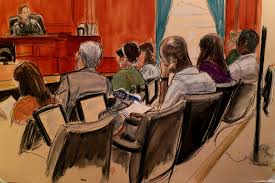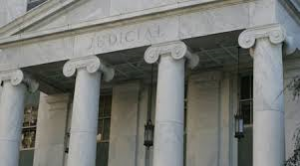
We are about to reach the 100 day milestone of the current POTUS, and with that come many criticisms and many “attaboys.” It’s all in the eye of the beholder. This POTUS is the first in a string NOT to be a lawyer. When you think about that, the fact that he is not a lawyer, nor has he ever served in any public service role, means he has had no formal training in the Constitution nor in either drafting, interpreting or applying legislation. These are things that lawyers do every day, day in and day out. That is pretty obvious. What may not be at the forefront of your mind when thinking about lawyers is the professionalism displayed by lawyers every day. Not only must lawyers as professionals in the practice of law abide by certain formal ethical rules and rules of professionalism, they must also insure they practice with a certain courtesy and respect for their opponents and for the judicial system that other people, say, real estate tycoons, for example, do not. So as we approach that 100 day marker for the POTUS, I have been thinking of a few things that POTUS, a non-lawyer, so far has failed to demonstrate consistently in the last 100 days and what he could learn from lawyers…things I think would naturally serve him, his administration and most importantly, the people of the United States, well.
- Be Impeccable With Your Word. A lawyer’s ability to advocate successfully for his or her client is only as good as his or her credibility, and credibility directly flows from being able to count on what a lawyer says as being true. No half-truths, no hedging the truth, no embellishment to make your facts seem just a little bit better than they really are. A lawyer must always tell the truth in all dealings or risk complete ineffectiveness, or worse, a client’s, or an opposing counsel’s, or a judge’s (gasp!) not being able to believe what the lawyer is telling them. Once that happens, all is lost. You may have heard this referred to as “your word is your bond.” The Cambridge Dictionary defines this as “If someone’s word is their bond, they always keep a promise.” Nothing is truer for a lawyer. Lawyers even have a duty of candor to the court to inform the court of case law or precedent that goes against their client’s position in court. Can you imagine a salesperson having to tell a customer that he could actually sell a car to you for less than what you, the customer, is willing to pay for it? Of course not, but lawyers are required to act with that much candor and honestly at all times before the Court. The ideals of professionalism in the practice of law are aimed at ensuring our profession remains a “high calling” and not “just a business like any other,” enlisted in the service not only of the clients, but of the public good as well. “A Lawyer’s Creed,” developed by the Chief Justice’s Commission on Professionalism (the Commission), states it as thus: “To the courts, and other tribunals, and to those who assist them, I offer respect, candor, and courtesy. I will strive to do honor to the search for justice. ”
- Never Take Anything Personally. I think this is good advice for everyone, but especially lawyers must behave like this and are expected to do so. Trial lawyers must always do their jobs in an adversarial situation. By definition, there will also be another lawyer representing the opposing party in a lawsuit trying his or her level best to prevent you from succeeding. Think how hard this is! If we were talking about the profession of medicine and using surgery as our analogy, no other surgeon comes into an operating room to try to prevent the operating surgeon from performing the surgery successfully! No other doctor comes in and tries to kill your patient! But that is precisely what occurs in the practice of law. Every time I represent a client there is an opposing counsel trying to prevent me from succeeding. It’s pretty stressful, but would be even worse if the lawyer takes his opposing counsel’s efforts personally. The opposing counsel is just trying to do his job well, too. That’s all. And The Lawyer’s Creed requires lawyers to promise this to opposing counsel: “To my colleagues in the practice of law, I offer concern for your welfare. I will strive to make our association a professional friendship.” We also are required to make this promise: “To the opposing parties and their counsel, I offer fairness, integrity and civility. I will seek reconciliation and, if we fail, I will strive to make our dispute a dignified one.” Temper tantrums and other demonstrations of pettiness and “unsportsmanlike conduct” have no place in the legal profession. Following a trial, adversaries shake hands, regardless of the outcome. I have never had a problem shaking the hand of my able adversary when he or she has conducted himself or herself with integrity and professionalism throughout the litigation. It honors our justice system and your opponent. As Shakespeare wrote in “The Taming of the Shrew,” “do as adversaries do in law, strive mightily but eat and drink as friends.”
 Atlanta Injury Lawyer Blog
Atlanta Injury Lawyer Blog

























